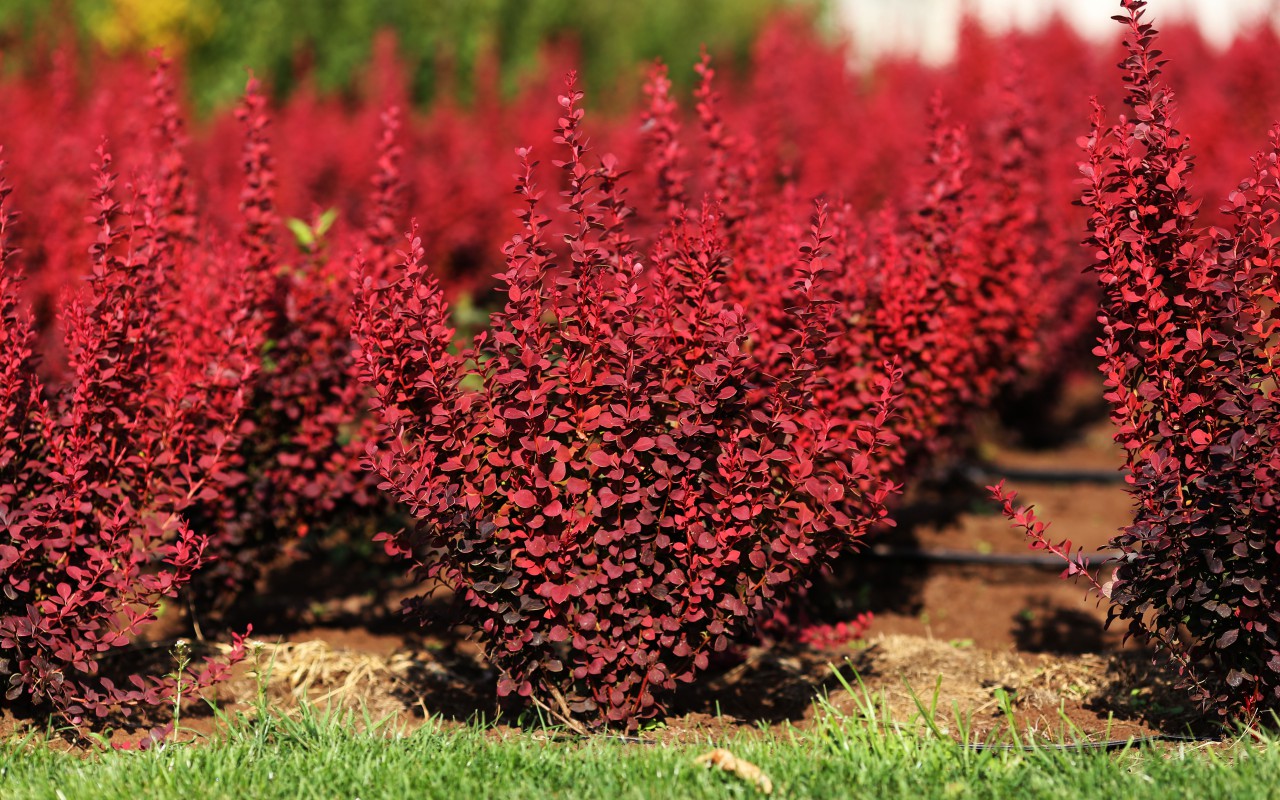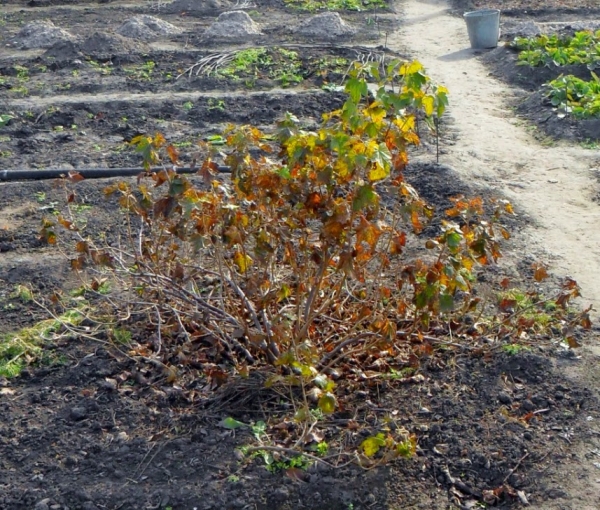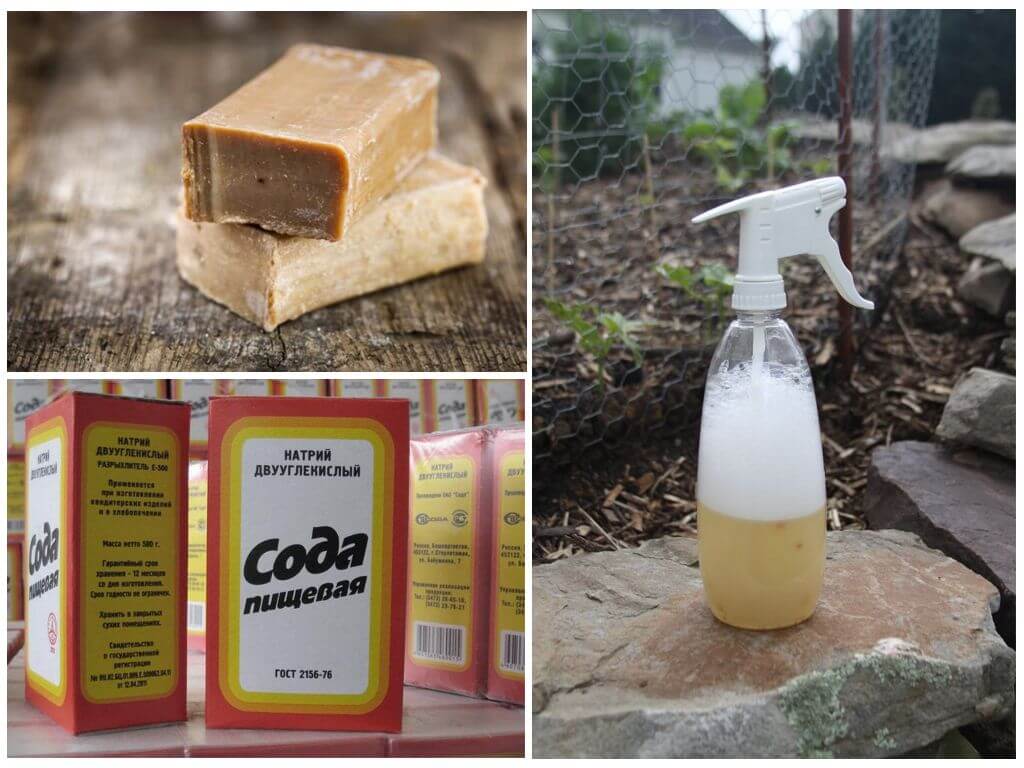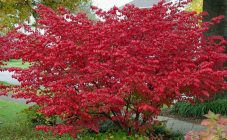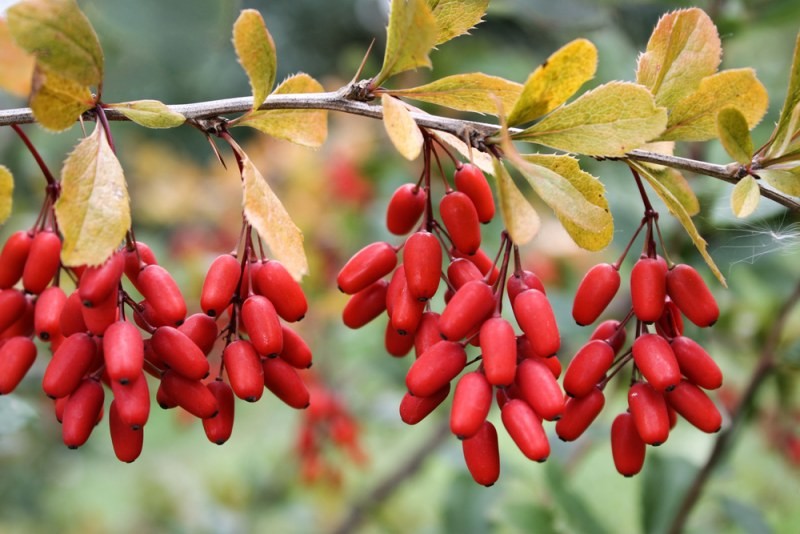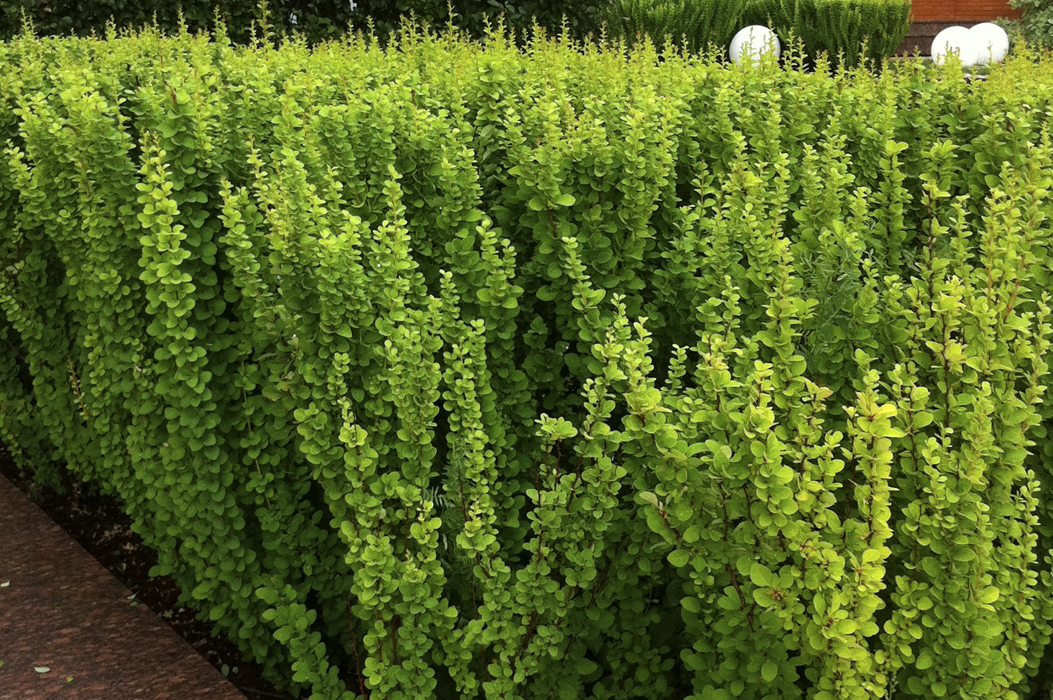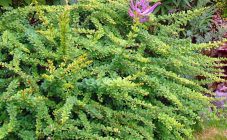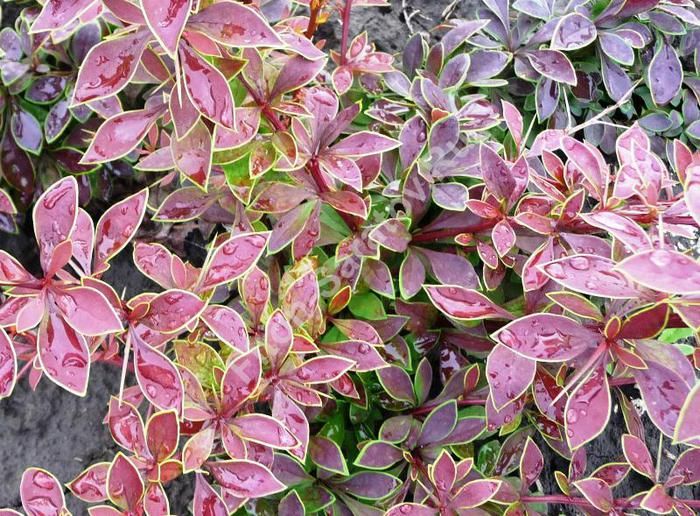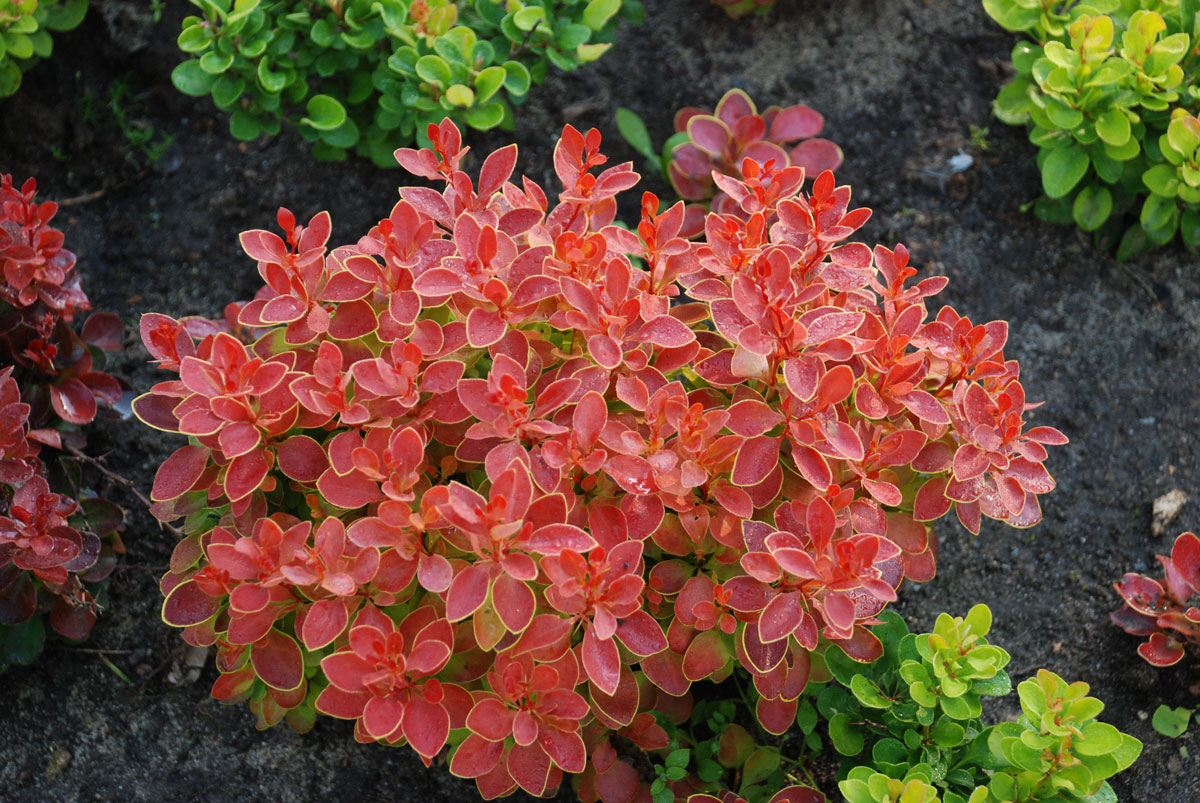Content:
The dream of every owner is to have a beautiful landscape in the yard in the form of a flower harbor, a gazebo and a pond. Orange Rocket Barberry - a delicate ornamental shrub is perfect for decoration. Since ancient times, the plant has grown on the tops of the mountains, and only since 1864 the inhabitants of Japan and China drew attention to it. Since then, barberry began to grow in the city's central flower beds and around houses.
Characteristics and features of the Orange Rocket variety
Short description:
- It is a shrub with a deciduous columnar shape;
- Shoots are vertical, strong, there are thorns;
- The foliage is smooth and small, from 1 to 3 centimeters. The color of the leaves is first green, then orange, the brightest and most intense color is observed from early spring to December. The shape is ovoid, near the base of the leaves are slightly narrowed, there is a yellow border at the edges;
- Plant height is maximum 1.2 meters, width - half a meter;
- Fruits are small, 10 millimeters in diameter, red in color, growing sparsely. The fruits ripen in late summer, early autumn, have a bitter taste, are not edible;
- Flowers are yellow, small, growing in small inflorescences. Flowering occurs in late May and early June;
- The growth of the barberry is not great, no more than 15 centimeters per year;
- Undemanding to care. Resistant to various temperature conditions, easily tolerates drought;
- High winter hardiness, although some varieties of Thunberg barberry should be wrapped for the winter, for example, the Harlequin variety;
- It is a light-loving plant, in dark places foliage and flowers acquire a dull shade;
- The root system is branched, easy to reproduce.
Growing features
Soil preparation
This culture is unpretentious in the choice of soil, the main thing is that the acidity of the soil does not exceed seven percent. An excessively acidic environment can be limescale. To do this, before planting the barberry, a solution of slaked lime, humus, wood ash and superphosphate is poured into the planting hole. Required proportions: 400 grams of lime, 8 to 10 kilograms of humus, 200 grams of ash and 100 grams of phosphate.
Since the shrub is thermophilic, the place of the site should be selected light. If you plan to grow other plants nearby, the principle of growth should be observed. First of all, low crops are planted, then medium and at the very end - large and high. This sequence will allow you to properly distribute the access of the sun and heat.
In flower shops or at fairs, ready-made seedlings in pots are bought. Then, by reproduction, you can collect the seeds of the fruit and prepare them yourself for further use.
Landing in the ground
Planting is carried out in the spring, it is important not to allow the buds to open. If, when buying Barberry Orange Rocket, it began to bloom in a pot and grow actively, then the planting should be postponed until autumn.
A single planting is carried out in this way: each bush sits at a distance of half a meter from each other. In the case of creating a barberry hedge, several bushes are planted per linear meter at once.
The depth of the holes is 20-40 centimeters, the depth of the groove is also 20-40 centimeters.It is necessary to prepare the seedling grooves in two to three weeks. A small amount of sand should be poured at the bottom of the trench and holes, this will improve aeration of the root system.
The seedling is inserted into the hole, sprinkled with soil, compacted by hand and well filled with water. Then the trunk is mulched with compost and peat. From above, the seedling is cut to the third, maximum of the fifth bud.
Reproduction
Reproduction is carried out in several ways:
- bone;
- cuttings;
- by dividing the bush;
- layering.
An example of bone propagation
The collection of barberry berries is in progress. A bone is removed from them, which is subsequently lowered into a solution of potassium permanganate for several minutes. Raw materials are dried and stored in a warm dry room. In the fall, planting material is sown on open ground, but first on the preparatory bed. The depth of the hole is one centimeter, the distance between the holes must be at least 3 centimeters. Growing a seedling takes several years, then it is ready for transplantation to a permanent place. During transplantation, the root must be dug out of the ground so as not to damage the root system.
Care
Watering
Do not moisten your mail with frequent precipitation. With constant drought, watering is carried out every week. The water should be warm, only the root is watered, water should not get on the leaves, this will contribute to their wilting. Also, the bushes need watering immediately after planting in order to strengthen the root system.
To enhance the growth of the shrub, it is important to loosen the ground in time and clear the root growth and the entire area from weeds.
Pruning
The service also includes timely pruning. During the procedure, dry and weak shoots are cut off. In case of thickening of the bush, the shoots are thinned out. The first decorative circumcision is carried out one year after planting, in the spring. The branches are halved. The next such manipulations are carried out several times a year, in mid-June and early August.
Top dressing of an ornamental plant
When planting, the soil is well fertilized, this top dressing will last for a whole year. The next spring, a solution prepared from a nitrogen compound (for example, 30 grams of carbamide) is poured under each shrub. This type of food is used once every 4 years.
Barberry diseases and parasites
The plant is susceptible to attack by such insects:
- barberry sawfly;
- flower moth;
- barberry aphid.
During aphid infestation, the leaves will begin to dry out and shrivel for no reason. The moth eats fruits.
To eliminate aphids, a solution based on laundry soap is used: 300 grams of soap is used for ten liters of water.
The sawfly and the moth are killed with a 3% chlorophos solution.
Diseases characteristic of this culture:
- leaf spot;
- rust;
- withering;
- powdery mildew;
- bacteriosis.
Advantages and disadvantages
Pros:
- unpretentious shrub adapted to hot and cold climates;
- abundant flowering for six months;
- does not freeze in severe and cold weather;
- lends itself to decorative pruning, grows easily after thinning;
- the plant is universal, it can grow as a separate crop or in combination with other shrubs and flowers.
Minuses:
- growing very slowly;
- may die with abundant filling;
- requires cross-pollination.
So, Barberry Orange Rocket Thunberg is a wonderful shrub that can be used to create an attractive landscaping for any yard and business. The appearance will delight the human eye for a long time, the main thing is to carry out pruning in time and carry out prevention against fungal diseases.
